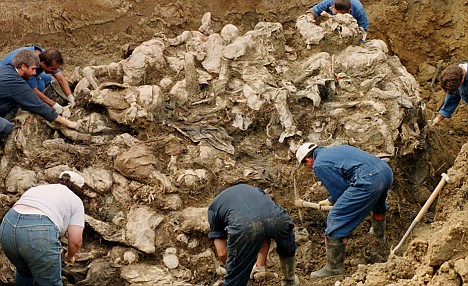Nine News National reported on December 31, 2013 the story of WWII criminals were relocated to Australia. The country had become a safe haven of sorts for war criminals to live out their lives in comfort while their victims lay in unmarked graves all over Europe.
These were mostly Eastern Europeans who participated in Nazi crimes against Jews and many others.. There was plenty of evidence of their crimes; however, there was a lack of official action until more than 40 years after the end of the Second World War.
Cabinet papers for 1987 and 1987 were released by the National Archives of Australia. These papers show that the government of Bob Hawke made the first decisions that confirmed that mass murderers were in their midst. This led to detailed investigations of the dark events, but there were no successful prosecutions. The Hawke government was pushed into action by reports from the journalist, Mark Aarons, who detailed the overwhelming evidence of Australia’s plans to allow “the Holocaust’s foot soldiers and middle managers” to seek refuge.
June 1986, the government ordered a review of the material that related to immigration of suspected war criminals and actual war criminals. The review was conducted by Andrew Menzies and was to determine if there was sufficient evidence to justify further investigation. Menzies’ report was tabled in parliament in December 1986 and it concluded that it was more likely than not that a large number of people who were guilty of war crimes were living in Australia.
The government had formed the Special Investigations Unit in 1987. Over the next five years, they examined more than 800 cases; however, only three were charged. The men were old, of Ukrainian heritage, and were living in Adelaide. Only one of them ever faced a trial. After a protracted trial, a jury took less than an hour to acquit Ivan Polyukovich, who was accused of murdering 25 Jews in the Ukraine, which was occupied by Germany at the time.
One difficulty the trials faced was that so much time has passed, the eye-witness testimony was deemed unreliable. This was demonstrated during the trial when a witness was asked to identify the man he was testifying against. She pointed to an American tourist in the public gallery.
